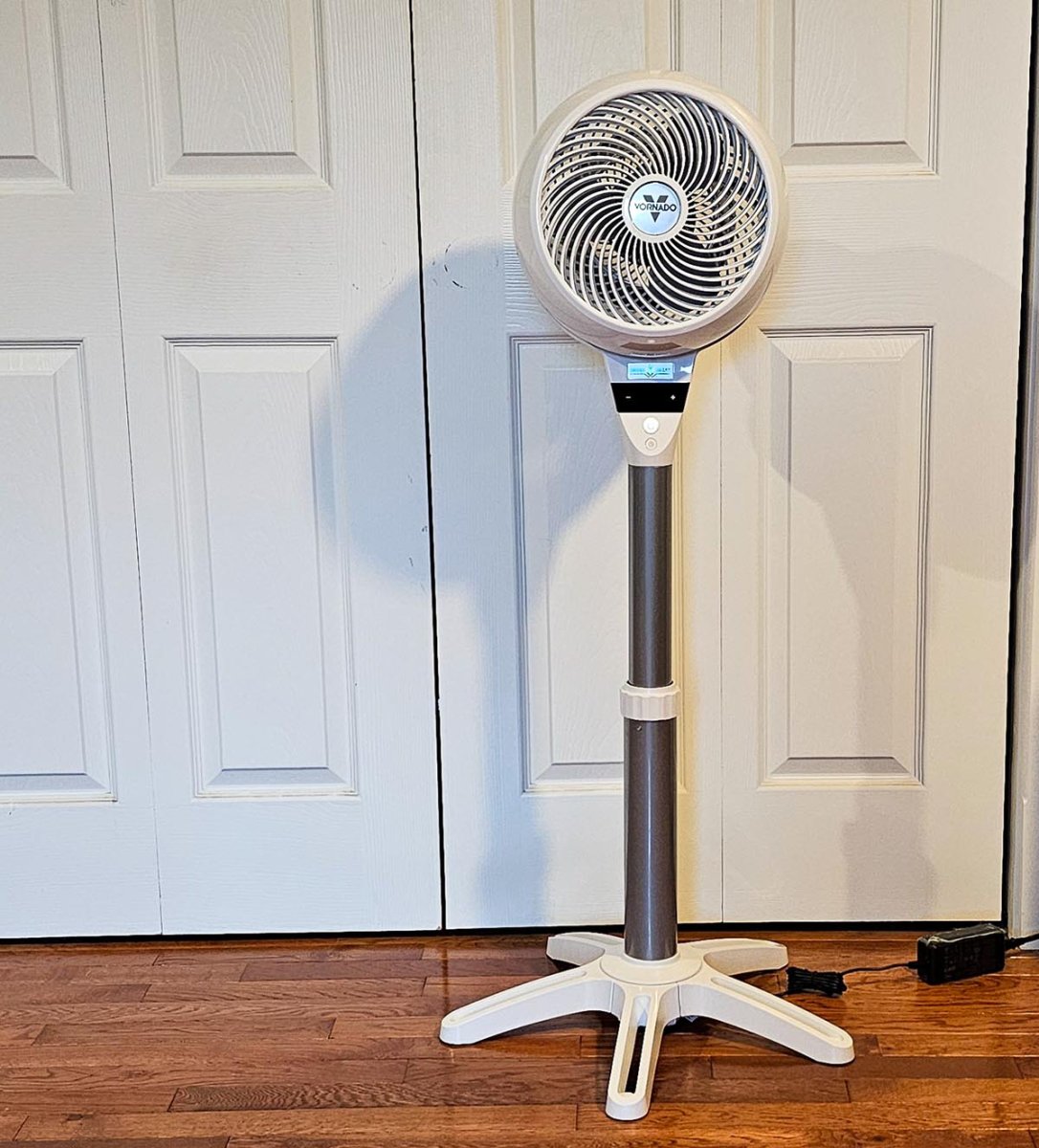We may earn revenue from the products available on this page and participate in affiliate programs. Learn More ›
If you want to stay comfortably cool this summer without cranking up the AC, a fan is the best (and most affordable) way to do it. As part of a comprehensive hands-on review to determine the best pedestal fans, I tested the Vornado 6803DC air circulator in my own home, and it ended up taking the top spot in our lineup.
This fan is quiet, offers an almost unbelievable 99 airflow settings, and comes with a tilt head for directing airflow where you need it the most. Is it perfect? No. There are a couple of things I’d change if I had my way. But what it gets right, it gets right in a big way.
Ahead, find out how this versatile Vornado pedestal fan earned top honors in real-life testing and why it might be a good pick for keeping your family cool this summer.
Vornado 6803DC Pedestal Fan: At a Glance
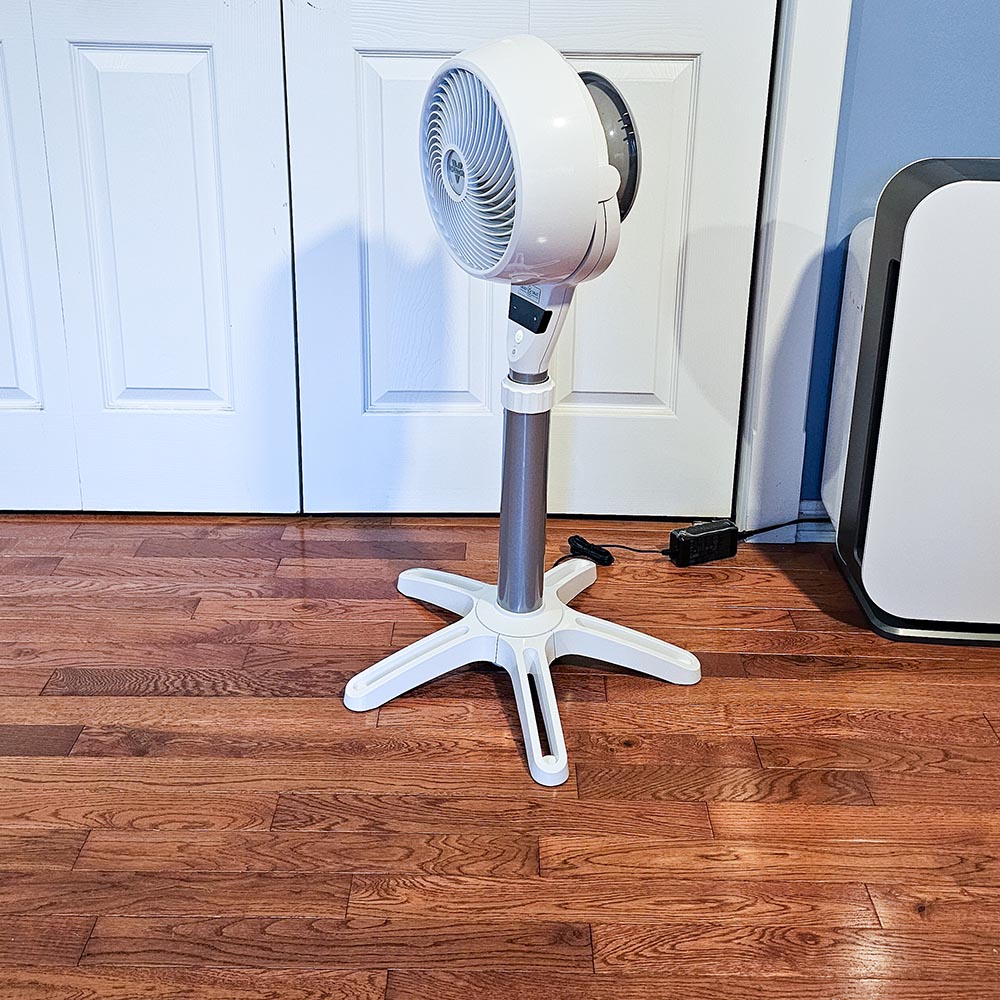
Rating: 4.75/5
SPECS
- Power source: Corded electric
- Maximum height: 43.5 inches
- Decibel range: 30 to 59 decibels (dB)
- Weight: 8.54 pounds
PROS
- Sleek design with adjustable fan head height
- Powerful airflow that can be felt across a room when on high
- Very quiet, virtually silent operation at lower speed
- Tilt head can bounce breeze off the ceiling for uniform distribution
- 99 different speed levels, ensuring users can choose the right one for their needs
CONS
- Lack of storage spot for remote control, making it more likely the remote could be lost
- Does not offer an oscillating feature, although the tilt head makes up for much of that
Get the Vornado fan at:
What is the Vornado pedestal fan?
The Vornado 6803DC fan is a sleek-looking air circulator fan that comes with an extendable base. Users can raise or lower the fan head from 43.5 inches to 34 inches, depending on where they want to focus airflow.
The Vornado company is well known for manufacturing a variety of fans that produce powerful breezes, and in my tests, the 6803DC was no exception. When I turned it on high, I was able to feel a strong draft all the way across a 15-foot room. Even more impressive was the relatively silent noise output when the fan was running. The fan has 99 power settings and, thanks to its DC motor (the quietest type), its noise level is not disruptive at any level.
This is not an oscillating fan, but it makes up for that lack by featuring a tilt head that can be directed up or down as needed. It also comes with a remote control and can be programmed with its built-in timer to run for several hours and then shut off.
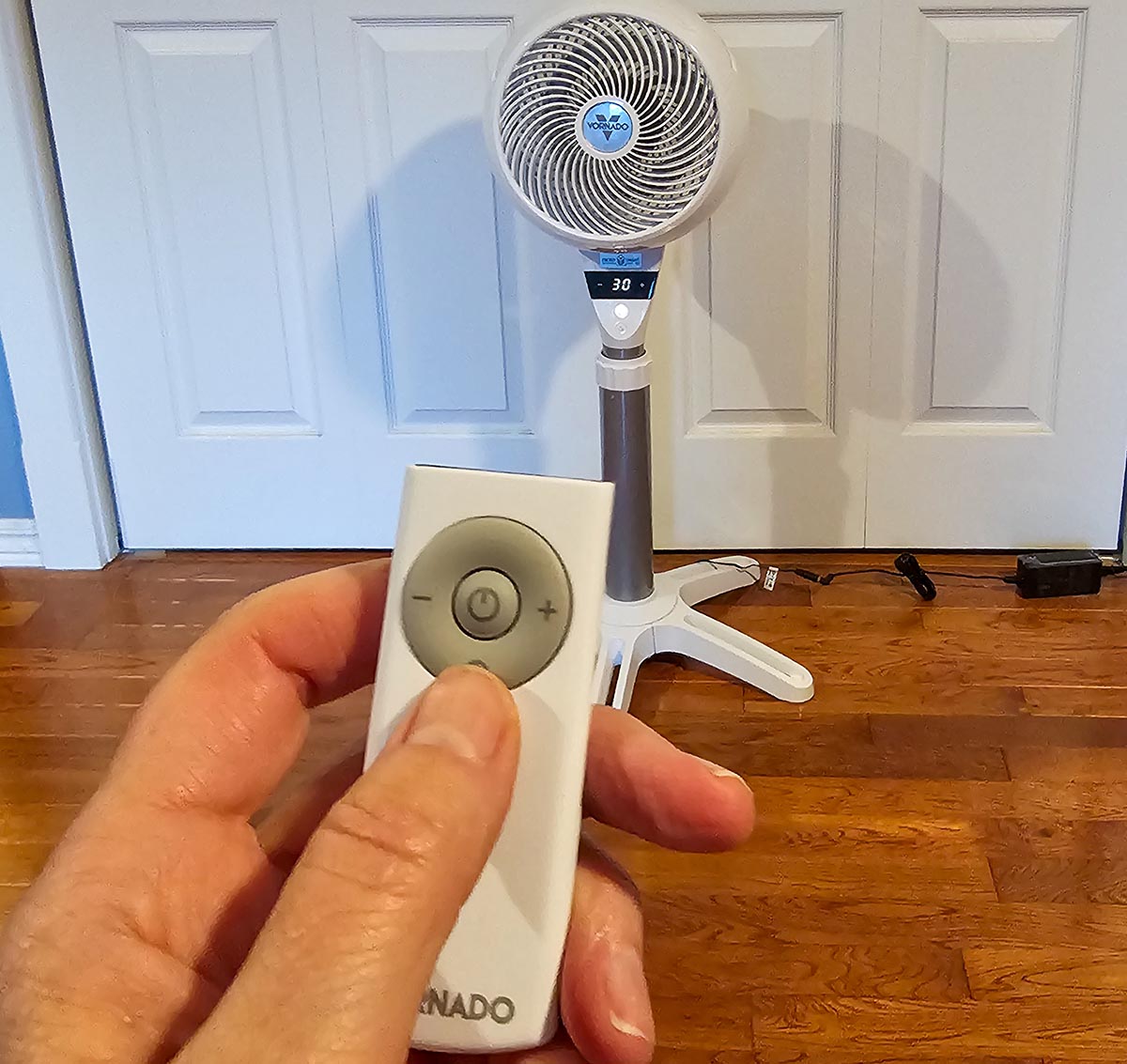
Assembly Insights
The Vornado pedestal fan is not difficult to assemble, but it could be a bit more user-friendly. I first attached the adjustable pole to the fan head. Then, I needed to feed a wire through the pole to connect it to the electrical cord at the base. The wire was lightweight and kinked up. Try as I might, it would not feed through the pole. I ended up having to use a long screwdriver to fish it out from the other end.
The base, on the other hand, was a snap to put together. It features five sturdy supports that slide into place and are held firmly via a screw-on bottom nut. It’s a good design—the base supports stabilize the top-heavy fan to keep it from tipping over. After that, all I had to do was plug the wire from the fan into the transformer/electrical cord and then plug it into the wall. If Vornado could figure out a better way to run the internal wire, it would save users some time trying to fish it out of the pole. All in all, though, it was a pretty simple assembly.
Airflow Dynamics
This is where the Vornado fan really shines—in fact, it blew me away. The Vornado generates a lot of air for the size of the fan head, which is relatively small at about 1 foot in diameter. On its lowest setting, I could feel a faint draft, but it would be optimal for keeping a sleeping baby cool. On the highest setting, the airflow was powerful enough to be felt all the way across the room.
This is a pretty quiet fan. According to the manufacturer, the decibel range is from 30 to 59 dB. I don’t think that’s quite accurate, at least not at the lowest level, since on Low the sound didn’t even register on my decibel tester. On high, it registered 57 dB from 6 feet away. For comparison, 57 dB is similar to the sound of background office music. What’s more is that the sound emitted by the fan is soothing, not distracting or irritating—almost like white noise. Even with the fan set to high, I quickly acclimated to the sound, and it faded away.
At first I wished that the Vornado could oscillate like a normal fan. But then I tilted its head straight up, letting the fan blow air toward the ceiling, which created a ceiling bounce that redirected and dispersed the airflow in a broader, uniform pattern, similar to a ceiling fan. After testing nearly a dozen other pedestal fans, I determined that the consistent flow from the Vornado’s ceiling bounce was more soothing than the intermittent flow I experienced when an oscillating fan turned in my direction. It was a small observation, but an interesting one.
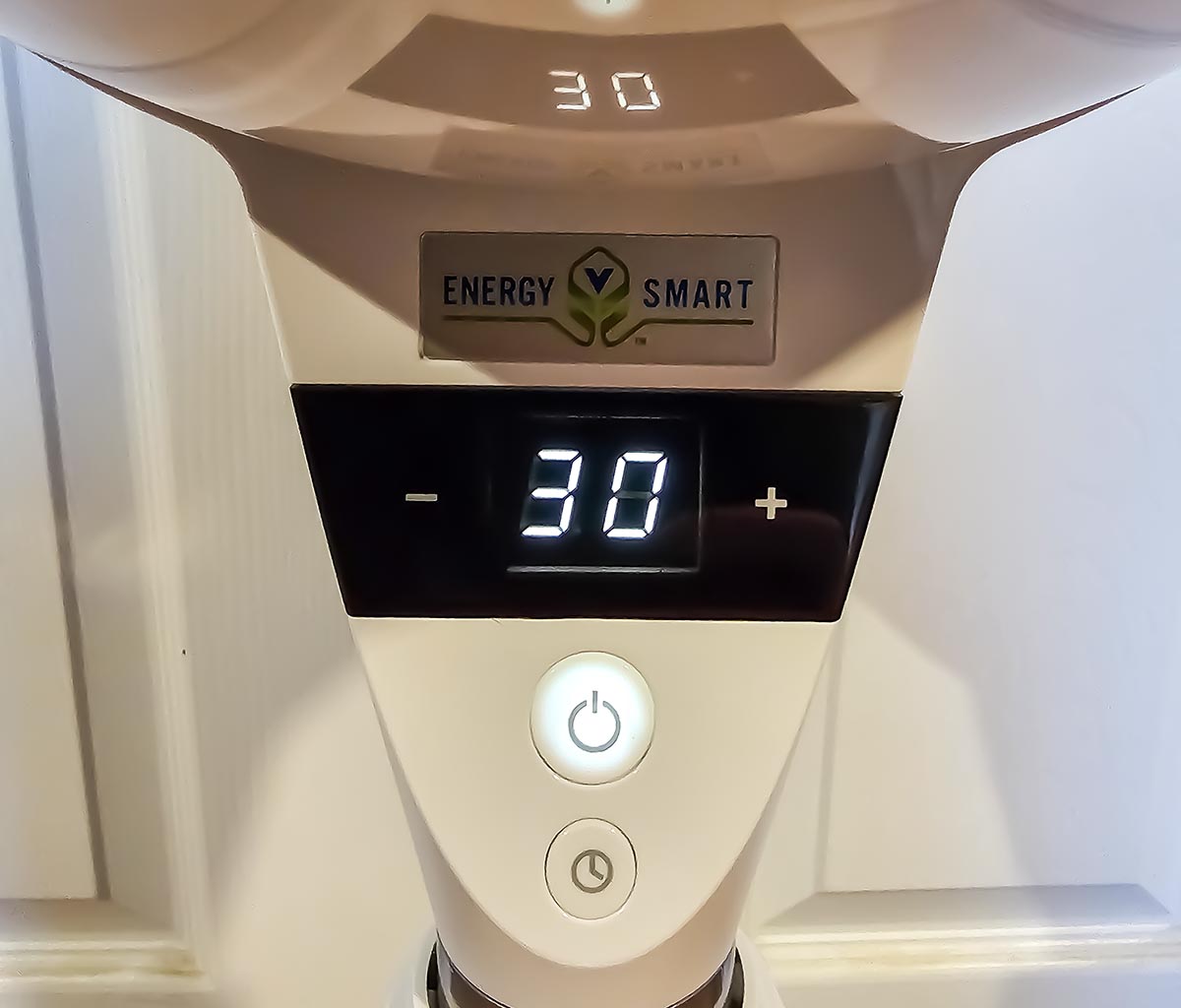
Design Details
The Vornado fan’s design is almost perfect—but not quite. The fan comes with a remote control, but there’s no place on the fan to stow it. Almost every other fan I tested had a place to hang or attach its remote control. While inspecting the fan for a remote storage spot, I did something stupid. I thought perhaps the handle cubby on the back of the fan head was supposed to double as a little pocket to hold the remote. So, I slipped it in there. Big mistake.
The remote, which is tiny, slid inside the fan head casing and became trapped. Try as I might, I could not shake the fan upside down at just the right angle to dislodge the remote. I had to disassemble the fan head casing with a screwdriver in order to reach the remote, which had become lodged in a tight spot.
The fan grill attaches to the casing with four Phillips head screws. Taking them out was simple, but reinserting them was a pain because the sections didn’t align properly. After about 45 minutes, I finally got the casing and grill back together. On the upside, the process taught me how to clean a Vornado fan.
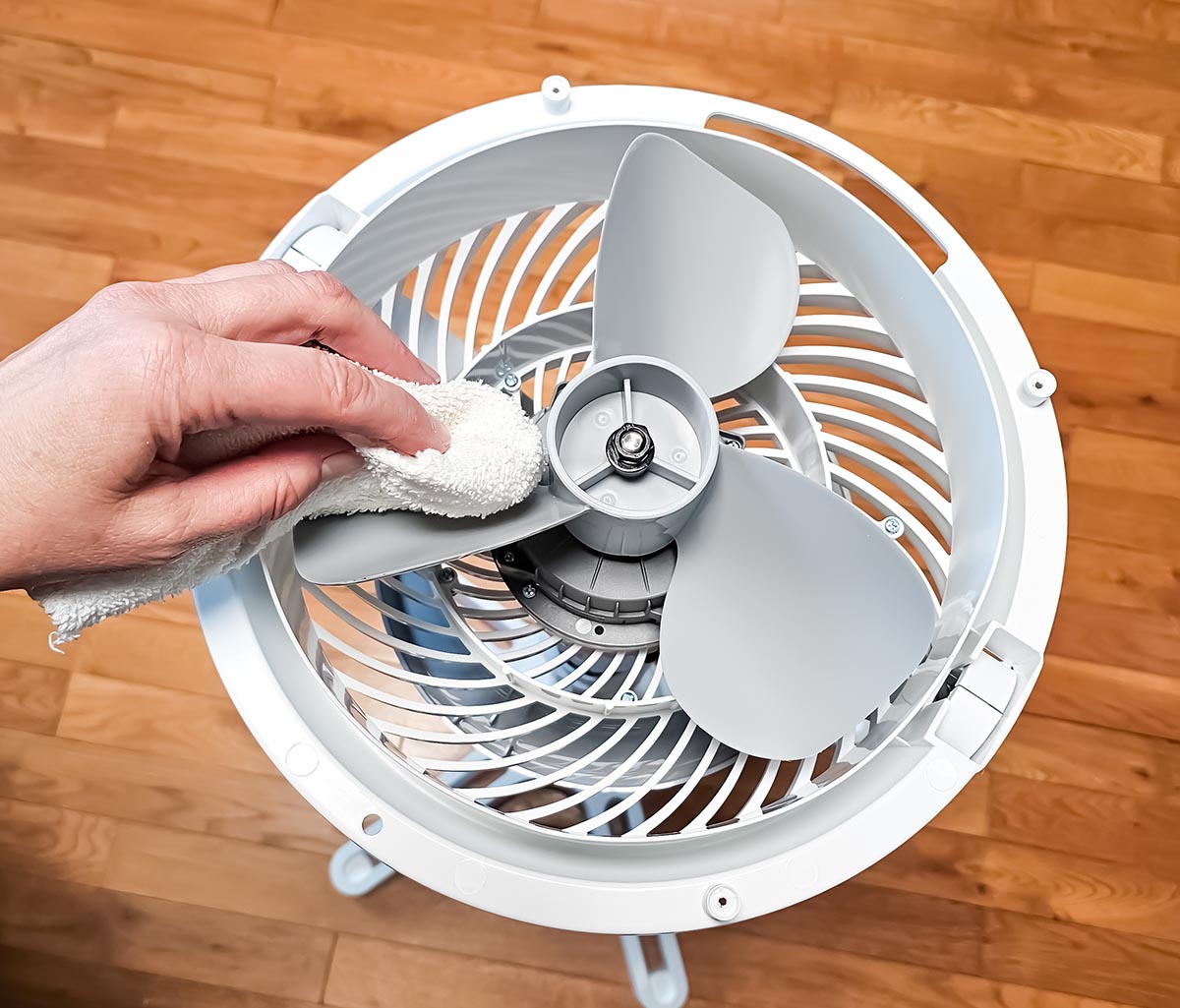
Is the Vornado pedestal fan right for you?
If you’re looking for a powerful room fan that can be adjusted to virtually any air speed you want while generating a soothing sound, the Vornado fan might be right for you. If you like the idea of uniform airflow distribution—similar to that of a ceiling fan—without the hassle of wiring, this pedestal fan is also a solid option. Its DC motor and high-quality build materials put it at the top end of the durability scale.
It currently sells for about $140 from several retail outlets, and most users highly recommend it. However, that may be a little pricey if you’re only looking for a pedestal fan to keep you cool for the summer. And if you’re looking for an oscillating model, this isn’t the pick for you.
For my money, I’ll stick with the Vornado fan. It grew on me after I discovered the ceiling bounce airflow effect was more soothing than oscillation. Plus, it’s a good way to reduce air conditioning bills.
Still, I do wish Vornado would put a storage spot on the fan to hold the remote. At the very least they could put a sticker inside the handle cubby, warning users not to place the remote in there.
Where to Buy the Vornado Pedestal Fan
Get the Vornado fan at:
Meet the Tester
Glenda Taylor is a product tester and writer specializing in the construction, remodeling, and real estate industries. She and her husband own a general contracting company, and Taylor is experienced in both residential and commercial building applications. She tests a wide range of power tools as well as other home improvement, household, and lawn-and-garden products.

